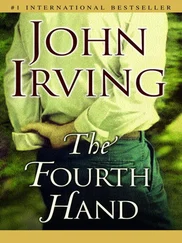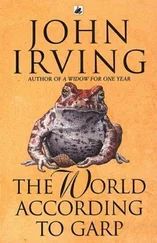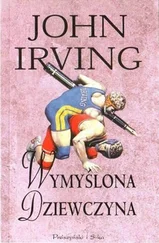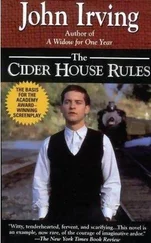“It’s truly ridiculous to listen to this!” Julia had said, and so he’d left her with her “instrumental music.”
Now Dr. Daruwalla put all this behind him. He thought about limps—all the different kinds he’d seen. He wouldn’t use Madhu’s name; he would call the girl in his screenplay Pinky, because Pinky was a real star. He would also make the girl much younger than Madhu; that way, nothing sexual could threaten her—not in Dr. Daruwalla’s story.
Ganesh was the right name for the boy, but in the movie the boy would be older than the girl. Farrokh would simply reverse the ages of the real children. He would give his Ganesh a bad limp, too, but not nearly so grotesquely crushed a foot as the real Ganesh had; it would be too hard to find a child actor with such a nasty deformity. And the children should have a mother, because the screenwriter had already planned how he would take their mother away. Storytelling was a ruthless business.
Briefly Dr. Daruwalla considered that he’d not only failed to understand the country of his origin; he’d also failed to love it. He realized he was about to invent an India he could both comprehend and love—a simplified version. But his self-doubt passed—as self-doubt must, in order to begin a story.
It was a story set in motion by the Virgin Mary, Farrokh believed. He meant the stone statue of the unnamed saint in St. Ignatius Church—the one that needed to be restrained with a chain and a steel grommet. She wasn’t really the Blessed Mother, but she had nevertheless become the Virgin Mary to Dr. Daruwalla. He liked the phrase well enough to write it down—“a story set in motion by the Virgin Mary.” It was a pity that it wouldn’t work as a title. For a title, he would need to find something shorter; but the simple repetition of this phrase enabled him to begin. He wrote it down again, and then again—“a story set in motion by the Virgin Mary.” Then he crossed out every trace of this phrase, so that not even he could read it. Instead, he said it aloud—repeatedly.
Thus, in the dead of night, while almost five million residents of Bombay were fast asleep on the sidewalks of the city, these two men were wide awake and mumbling. One spoke only to himself—“a story set in motion by the Virgin Mary”—and this allowed him to get started. The other spoke not only to himself but to God; understandably, his mumbles were a little louder. He was saying, “I’ll take the turkey,” and his repetitions—he hoped—would prevent him from being consumed by that past which everywhere surrounded him. It was the past that had given him his tenacious will, which he believed was the will of God within him; yet how he feared the past.
“I’ll take the turkey,” said Martin Mills. By now his knees were throbbing. “I’ll take the turkey, I’ll take the turkey, I’ll take the turkey.”
18. A STORY SET IN MOTION BY THE VIRGIN MARY
In the morning, Julia found Farrokh slumped over the glass-topped table as if he’d fallen asleep while looking through the glass at the big toe of his right foot. Julia knew this was the same toe that had been bitten by a monkey, for which the family had suffered some religious disruption; she was thankful that the effects of the monkey bite had been neither fanatical nor long-lasting, but to observe her husband in the apparent position of praying to this same toe was disconcerting.
Julia was relieved to see the pages of the screenplay-in-progress, which she realized had been the true object of Farrokh’s scrutiny—not his toe. The typewriter had been pushed aside; the typed pages had many penciled corrections written on them, and the doctor still held the pencil in his right hand. It appeared to Julia that her husband’s own writing had served him as a soporific. She assumed she was a witness to the genesis of yet another Inspector Dhar disaster, but she saw at a glance that Dhar was not the voice-over character; after reading the first five pages, she wondered if Dhar was even in the movie. How odd! she thought. Altogether, there were about 25 pages. She took them into the kitchen with her; there she made coffee for herself and tea for Farrokh.
The voice-over was that of a 12-year-old boy who’d been crippled by an elephant. Oh, no—it’s Ganesh! Julia thought. She knew the beggar. Whenever she left the apartment building, he was there to follow her; she’d bought him many things, most of which he’d sold, but his unusually good English had charmed her. Unlike Dr. Daruwalla, Julia knew why Ganesh’s English was so polished.
Once, when he’d been begging at the Taj, an English couple had spotted him; they were traveling with a shy, lonely boy a little younger than Ganesh, and the child had requested that they find him someone to play with. There was also a nanny in tow, and Ganesh had traveled with this family for over a month. They fed him and clothed him and kept him atypically clean—they had him examined by a doctor, to be sure he wasn’t carrying any infectious diseases—just so he could be a playmate for their lonely child. The nanny taught Ganesh English during the several hours of every day that she was under orders to give language instruction to the English boy. And when it was time for the family to return to England, they simply left Ganesh where they’d found him—begging at the Taj. He quickly sold the unnecessary clothes. For a time, Ganesh said, he’d missed the nanny. The story had touched Julia. It also struck her as highly unlikely. But why would the beggar have made it up? Now here was her husband, putting the poor cripple in a movie!
And Farrokh had given Ganesh a sister, a six-year-old girl named Pinky; she was a gifted street acrobat, a sidewalk beggar who performed various tricks. This didn’t fool Julia. Julia knew the real Pinky—she was a circus star. It was also obvious that another inspiration for the fictional Pinky was Madhu, Deepa and Vinod’s newest child prostitute; in the movie, Farrokh had made Pinky totally innocent. These fictional children were also fortunate to have a mother. (Not for long.)
The mother is a sweeper at St. Ignatius, where the Jesuits have not only employed her—they’ve converted her. Her children are strict vegetarian Hindus; they’re quite disgusted by their mother’s conversion, but especially by the concept of Holy Communion. The idea that the wine really is Christ’s blood, and the bread really is his body… well, understandably, this is nauseating to the little vegetarians.
It shocked Julia to see that her husband, as a writer, was such a shameless borrower, for she knew he’d robbed the memoir of a nun; it was a terrible story that had long amused him—and old Lowji before him. The nun was working hard to convert a tribe of former cannibals. She had a difficult time explaining the concept of the body and blood of Jesus in the Eucharist. Since there were many former cannibals in the tribe who could still remember eating human flesh, the theological notion of Holy Communion pushed a lot of buttons for them.
Julia saw that her husband was up to his usual blasphemies. But where was Inspector Dhar?
Julia half-expected to see Dhar come to the children’s rescue, but the story went on without him. The mother is killed in St. Ignatius Church, while genuflecting. A statue of the Virgin Mary falls from a pedestal and crushes her; she is given Extreme Unction on the spot. Ganesh does not mourn her passing greatly. “At least she was happy,” says his voice-over. “It is not every Christian who is fortunate enough to be instantly killed by the Blessed Virgin.” If there was ever a time for Dhar to come to the rescue, now’s the time, Julia thought. But Dhar didn’t come.
Читать дальше












